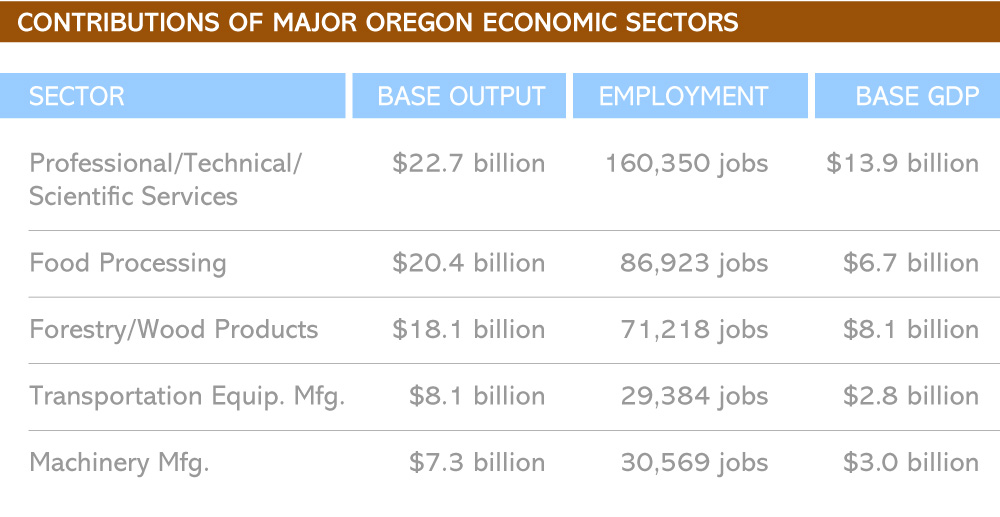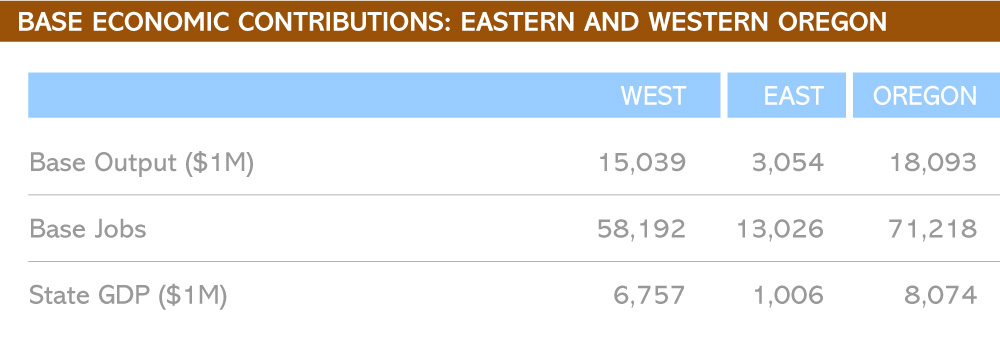
Economic Contributions

Despite taking a hit during the Great Recession, which crushed demand for new housing and therefore wood products, Oregon’s forest sector continues to recover and remains a vital contributor to the state economy. This is especially evident in rural communities, where timber has long been an economic cornerstone, and wood products companies are often the largest employers in town.
ECONOMIC IMPACT
• $18 billion in output
• 71,000 total jobs
• $8 billion in
• 4.7 % of total state output
• 3% of state employment
• 3.7 % of state GDP

BASE ECONOMIC CONTRIBUTIONS
The base economic contribution of the forest sector can be broken down into direct, indirect and induced effects. The direct effects are new dollars or jobs brought into the state, while indirect effects are jobs created in other sectors with links to the forest industry. Induced effects are when the forest sector pays wages to workers who use that money to purchase goods and services from other sectors of the Oregon economy.

*Note: The 60,000 forest sector jobs shown under Forest Sector Jobs in Oregon was developed by the Oregon Employment Department to estimate “forest related” employment. This includes direct and some indirect jobs in 2016. The 71,000 jobs estimate shown under Base Economic Contributions uses a model that counts direct, indirect and induced jobs. The model was used to compare the forest sector to other economic sectors.
